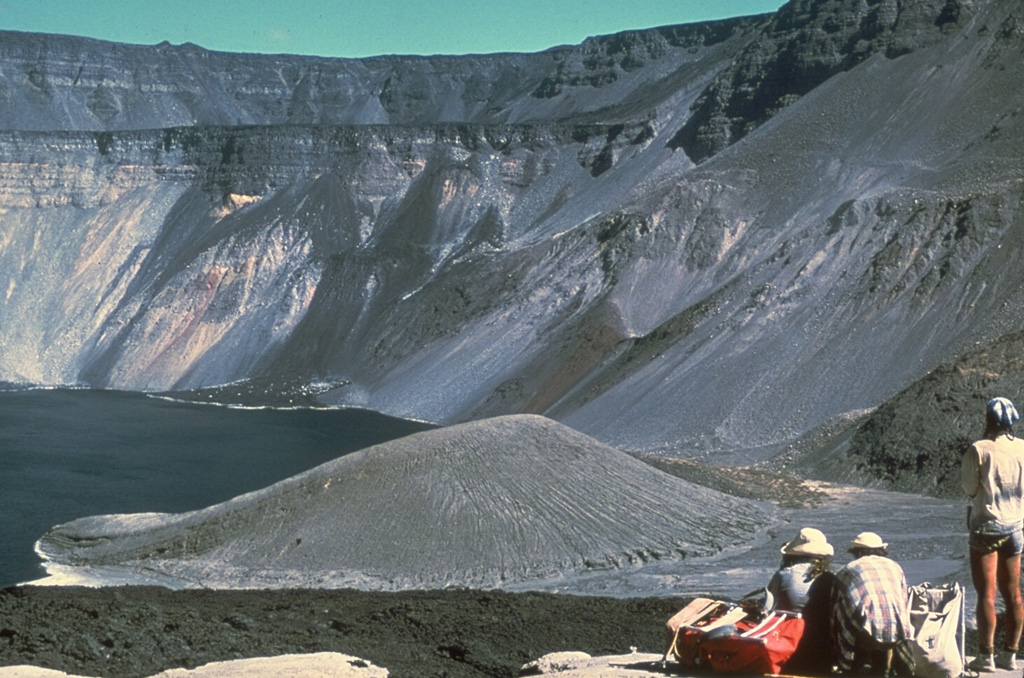Image GVP-04720

The tuff cone at the lower center, seen here from the NW in 1978, dropped 280 m during collapse of the Fernandina caldera floor in 1968. Collapse occurred in a piecemeal fashion over a period of about two weeks and the 110-m-high tuff cone, which previously formed an island in the caldera lake, rode the collapse downward without fracturing. The tuff cone was later buried by a 1991 lava flow following a 1988 debris avalanche. The prominent SE caldera bench is seen at the far side of the roughly 1-km-deep caldera.
Photo by Chuck Wood, 1978 (Smithsonian Institution).
![]() This image is made available under the Public Domain Dedication CC0 license, but proper attribution is appreciated.
This image is made available under the Public Domain Dedication CC0 license, but proper attribution is appreciated.

Fernandina
